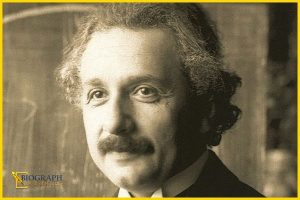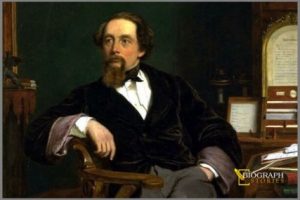
Vasco da Gama Quick Fact:
Born: 1460 or 1469, Sines, Alentejo, Kingdom of Portugal
Died: 24 December 1524 (Aged c. 55–65), Kochi, Portuguese India
Resting place: Jerónimos Monastery, Lisbon, Portugal
Spouse(s): Catarina de Ataíde
Children: Francisco da Gama, 2nd, Count of Vidigueira, Estêvão da Gama, Viceroy of India, Cristóvão da Gama, Captain of Malacca
Mother: Isabel Sodré
Father: Estêvão da Gama
Occupation: Explorer, Viceroy of India
Biography of Vasco da Gama:
The first European to reach India by sea, Vasco da Gama was a Portuguese explorer. He linked Europe and Asia by ocean route as the first person to sail directly from Europe to India. This opened up vast trade and political opportunities for the Portuguese and they no longer needed to traverse the dangerous and risky routes they previously used to. Portuguese to easily reach Asia and establish their colonial rule by the discovery of the new sea route. Vasco da Gama grew up to be a brave and curious young man. Before joining the navy, he is believed to have been educated in mathematics and navigation. In order to prove a political point to the French government which had disrupted Portugal shipping, King John II of Portugal sent him on a mission to the south of Lisbon and then to the Algarve region of the country to seize French ships and it was time he first proved his capabilities. The mission was successful completed and established him as a fearless sailor and earned him popularity. Later, Vasco da Gama was sent on a mission to find a maritime route to the East when King Manuel ascended to the throne. He was made the Portuguese viceroy in India for successful discovery of the direct sea route to India and this earned him much respect.
Childhood & Early Life of Vasco da Gama:
Little is known about the year of his birth and his upbringing. It is believed that Vasco da Gama was born in either 1460 or 1469 in Sines, on the southwest coast of Portugal. He was born to Estêvão da Gama, a wealthy knight and Isabel Sodré, the daughter of João Sodré, a prominent figure in the military Order of Christ. He had four brothers and one sister. Vasco da Gama joined the navy when he was old enough and learned how to navigate. Certain sources suggest that the studied at the town of Evora. It is believed that he have been trained in mathematics also. It is also claimed that, though that was never verified, Vasco Da Gama have studied under the astrologer and astronomer, Abraham Zacuto.
Career of Vasco da Gama:
Around 1480, Vasco da Gama joined the Order of Santiago. In 1481, King John II of Portugal ascended to the throne held the Order in high regard and this proved beneficial for the future career of da Gama. In 1492, on a mission to the port of Setúbal and to the Algarve the king dispatched da Gama. John II wanted da Gama to seize French ships in an act of retaliation because the French government had earlier disrupted Portuguese shipping. Da Gama received praise from the overjoyed king because the fearless navigator effortlessly performed the given task. King Manuel ascended to the throne in 1495 and like his predecessor; he too was much in favor of the da Gama family. Portugal had established itself as one of the most powerful maritime countries in Europe by this time and the country revived its earlier mission to find a direct trade route to India. In 1497, to lead the expedition to India Vasco da Gama was chosen. In July 1497, he set off to find a sailing route to India and the East, captaining a fleet of four vessels, including his flagship, St. Gabriel. The expedition first sailed south down the coast of Africa and then turned out into the Atlantic before swinging back in an arc to arrive at the southern African coast. After reaching the Cape of Good Hope, they moved toward the uncharted waters of the Indian Ocean. In May 1498, the explorers finally reached the Indian coast, at Calicut (now Kozhikode). In this way Vasco da Gama, successfully discover the all-water route from Europe to Asia. In 1499, after a difficult journey, the explorers returned to Portugal. Da Gama was showered with many rewards by the king and received a hero’s welcome at home. In 1502, with the aim of securing Portugal’s dominance in the region, the king sent him on another voyage to India. The explorers attacked Muslim ships, terrorized Muslim ports along the African east coast on this voyage, destroyed the city’s trade port, and killed several hostages upon reaching Calicut, India. In 1503, he returned from this voyage. Da Gama did not receive any rewards because the king did not consider this voyage to be a success. For the next two decades, Da Gama lived a quiet life. King Manuel I died in 1521, was succeeded by his son King John III of Portugal, and in 1524, appointed Vasco da Gama as the Viceroy of India. In April 1524, with a fleet of 14 ships the king sent da Gama on his third voyage to India. The fleet arrived in India after a troubled journey. This voyage was da Gama’s final voyage as he died within three months of arriving in India.
Personal Life & Legacy of Vasco da Gama:
Around 1501, Vasco da Gama married Catarina de Ataíde, the daughter of Álvaro de Ataíde, the alcaide-mór of Alvor (Algarve), and a prominent nobleman.The couple were blessed with six sons and one daughter. In 1524, Da Gama embarked on his third voyage to India. After his arrival in India, soon he contracted malaria and his health declined steadily. On Christmas Eve in 1524, he died in Cochin. Initially, he was buried in Kochi but later in 1539, his remains were returned to Portugal.








